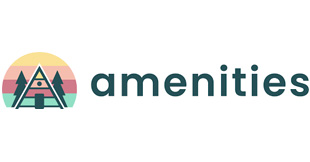In a preview of his HIMSS21 session, the chief digital engagement officer of Froedtert & the Medical College of Wisconsin describes how a mental health app has helped the health system’s patients.
National Institute of Mental Health data shows that more than 17.3 million U.S. adults have suffered from an episode of major depression in the past year, and one in three are afflicted by an anxiety disorder. Mental health conditions often go underdiagnosed and undertreated.
People also are facing added pressures from COVID-19, which is causing isolation, fear of the virus and financial pressures.
When Milwaukee, Wisconsin-based Froedtert & the Medical College of Wisconsin health network instituted routine depression screenings with its patients, it needed options for providers to meet patients’ mental health needs. It expanded its ability to deliver behavioral health services by implementing a digital health app and platform that its primary care and behavioral health caregivers can prescribe as part of a treatment program directly from their EHR workflow.
Measuring engaged patients
The provider organization has been measuring the success of its digital health app. The first question here is: How does one evaluate digital pathways for measuring engaged patients?
“The term ‘engagement’ is frequently used, but nebulously defined,” said Dr. Bradley Crotty, chief digital engagement officer and an internist at Froedtert & the Medical College of Wisconsin health network and medical director of Inception Health, Froedtert’s digital innovation hub. “For us, we simply define engagement as meaningful participation for a measurable effect. Digital is a channel that is capable of engaging people in very different ways than healthcare has traditionally been able to do. Digital can reach into the home, be on the go and 24/7.
“Engagement in health can take several different forms,” he continued. “Some people are able to incorporate health and wellness into their daily routines, and schedule time for mental health appointments and follow-through. For others, they may not have that luxury, and engagement may take a different form. Digital enables additional options for people.”
For mental health, people have a variety of paths toward digital engagement: apps supporting mindfulness, programs supporting cognitive behavioral therapy and even digital medications, he added.
“Measuring engagement for each of these depends on the intent and the specifics,” he explained. “Very generically, usage is a great surrogate metric for usefulness. If people find a tool useful, they will continue to use it. It is just important to note that usage patterns may be complex to analyze. Sometimes a small amount of focused usage can really help.”
Internet-based cognitive behavioral health
Froedtert & the Medical College of Wisconsin health network chose to augment its behavioral health and primary care programs with an Internet-based cognitive behavioral health program (SilverCloud, integrated through Xealth).
“Roughly 10% of people seen in primary care will have depression,” Crotty said. “The approach we took was to identify an evidence-based tool and add it to our digital formulary as an option for patients. We chose a tool that can provide information, as well as exercises, and paired it with a coach who is able to encourage and guide.
“We have evaluated the tool in terms of usage, outcomes – PHQ-9 for depression and GAD-7 for anxiety – and user satisfaction,” he continued. “Upwards of 60% of patients show some improvement in the system. Patients with at least moderate depression had an average 23% reduction in PHQ-9 scores and those with at least moderate anxiety had a 26% reduction in GAD-7 scores.”
Looking at all patients with depression, 23.7% (89/376) responded (defined as 50% or greater drop in PHQ-9) and 15.7% achieved remission, he added.
Tying the app into workflows
When Froedtert & the Medical College of Wisconsin health network launched SilverCloud, it tied it to its depression screening workflows.
“We used decision support within our Epic electronic health record to alert clinicians to the high PHQ score and provide a direct link to order the digital service through our integrated digital formulary,” Crotty explained. “We use Xealth to manage our formulary and provide the connectivity to our digital therapeutics. Our clinicians have a tab in their EHR screen where they can order digital therapeutics like SilverCloud, and they can monitor patient progress.”
It means that clinicians can easily track the engagement and progress in the digital therapeutic directly within the EHR and their workflow, he added.
“We have additional workflows, such as in our integrated behavioral health models, that embed psychiatrists and psychiatric nurses into primary care, where staff routinely order SilverCloud as part of the patient’s program,” he noted. “In this way, the program serves as an adjunct and reinforcer of care.”
When to scale programs
Froedtert & the Medical College of Wisconsin health network looks for opportunities to scale programs when the workflows have been well established for clinicians and their staff and where the user experience has been optimized for patients.
“In mental health, we scaled across primary care after working through several issues, including eligibility, monitoring and escalation,” he said. “As we develop experience, we then look to scale across broader ranges, and we are moving more into specialty care.
“Lastly, we are actively planning on offering the service as an ‘over the counter’ digital therapeutic for people who are already digitally engaged with us and have our mobile application and are under stress, feeling depressed or anxious, or struggling with sleep issues.”



